Artnet Auctions
Discover 6 Decades of Abstract Prints in Our Contemporary Editions Auction
The sale is live for bidding through May 30, 2024.
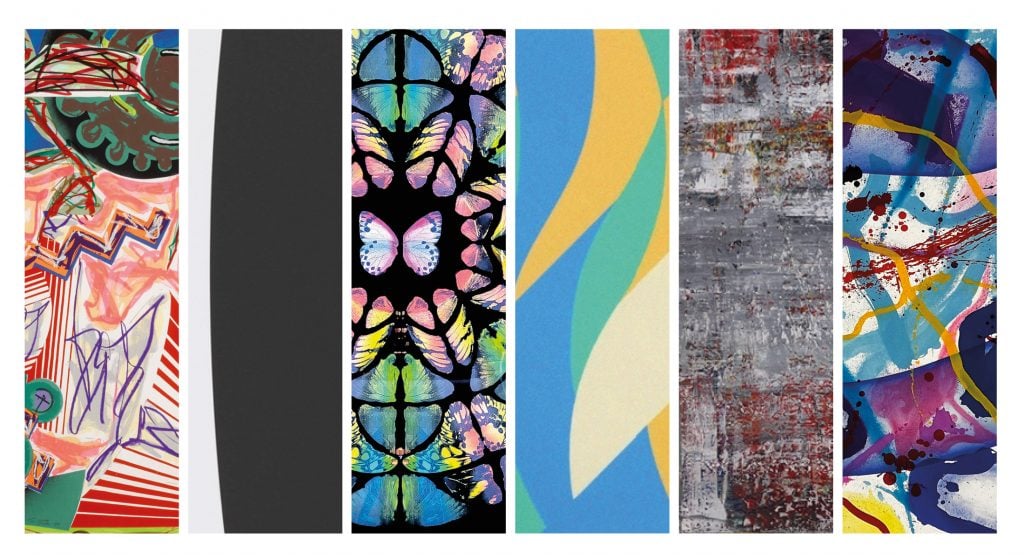
The sale is live for bidding through May 30, 2024.

Artnet Auctions

Artnet’s Contemporary Editions auction has returned this May, presenting works by Damien Hirst, Christopher Wool, Julian Opie, and more, all live for bids until May 30.
Amongst figurative prints and three-dimensional multiples, the sale also presents a retrospective look at the established relationship between printing and abstraction. Through six prints spanning six decades, our Specialists take us through the prints which speak to this long and fruitful cross-over.
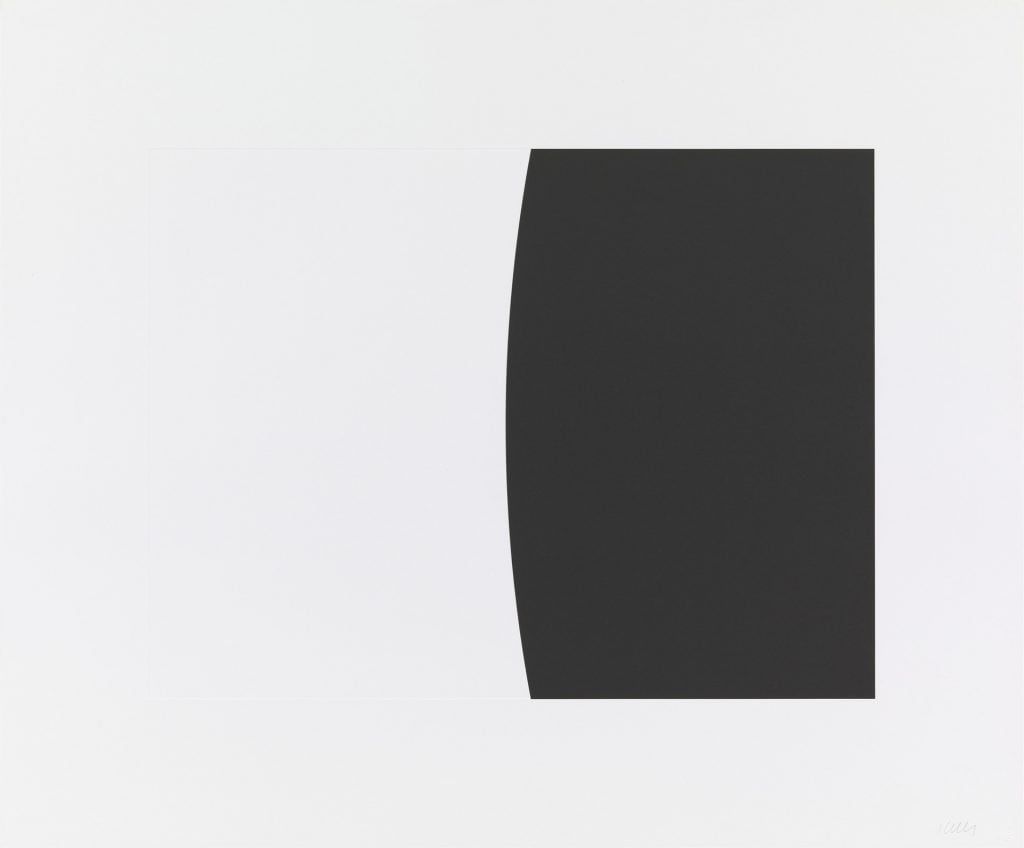
Ellsworth Kelly, Tournus (from Romanesque Series) (1976). Est. $3,000–$5,000.
American artist Ellsworth Kelly was less an “abstract artist” and more an artist operating in a reductive manner both in form and color. His work, like the present print from his “Romanesque Series” (1973–76), also reaches across spatial unity. Recalling the artist’s travels in France in the late 1940s and early 1950s, Tournus (1976) references the shapes and depth of Romanesque architecture. Upon first glance, the print appears to be a simple and elegant form printed in black, but further examination reveals a subtle, rectangular embossment. As an artist who was prolific in printmaking, Kelly’s occasional use of embossment was applied almost exclusively to his monochromatic prints. The technique opens the picture plane dimensionally and recalls the artist’s preoccupation with sculpture.
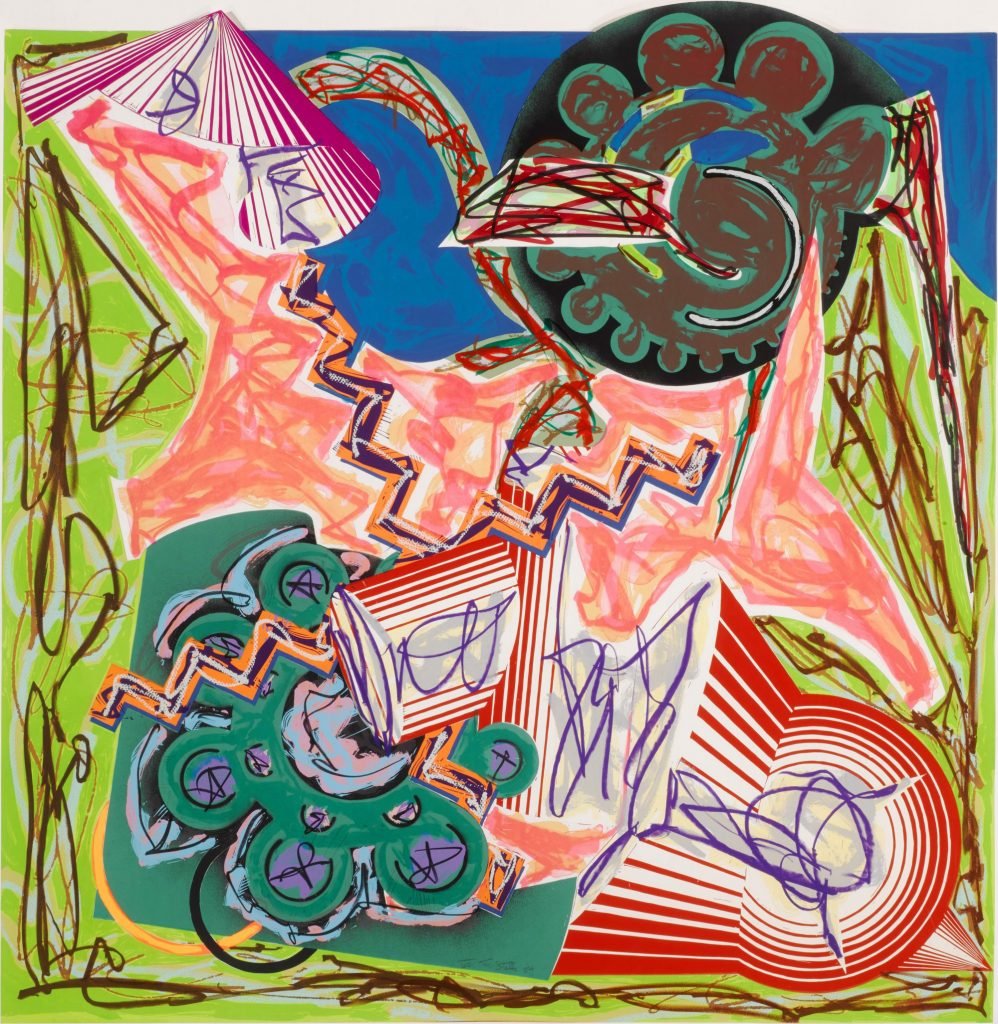
Frank Stella, Then Came an Ox and Drank the Water (from Illustrations After El Lissitzky’s Had Gadya) (1982–84). Est. $10,000–$15,000.
Frank Stella is known primarily as a Minimalist, even having coined the unofficial motto of the movement: “What you see is what you see.” He helped lead the way from Abstract Expressionism to Minimalism in the late 1950s and ’60s, but his style continued to evolve decade by decade and, by the 1980s, he was embracing a more “maximalist” approach to abstraction.
Stella is known for his experimental, imaginative, and large-scale approach to printmaking. His complex prints often layer several different printmaking techniques, such as in Then Came an Ox and Drank the Water (1982–1984) which combines lithography, linoleum cut, and screen print with collage. It comes from his Illustrations After El Lissitzky’s Had Gadya portfolio, which consists of 12 prints he created after seeing El Lissitzky’s 1919 gouaches, which illustrated each line of the traditional Jewish Passover Song Had Gadya. This print, along with the rest in the series, has a highly dynamic composition that was developed by using multiple methods to create a stylized and evocative image.
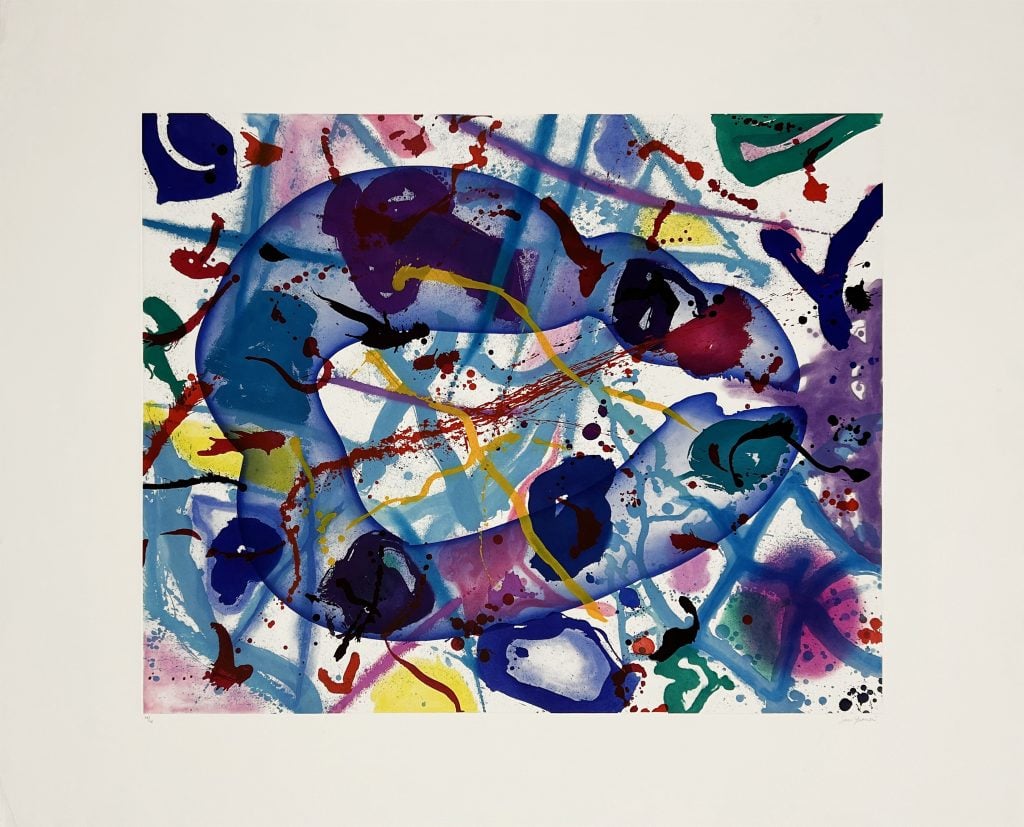
Sam Francis, Trietto 4 (1991). Est. $7,000–$10,000.
Having developed a highly personalized style of abstraction, Sam Francis was an artist who defied easy categorization. Starting in the early 1960s, printmaking became an important part of Francis’ artistic output, with the artist ultimately creating almost 500 prints over the course of his career. Rather than being drawn to the technical aspects of printmaking, Francis was attracted to the inherent “magic” of the medium. He initially worked in lithography but began experimenting with intaglio in the 1980s.
With their dynamic splashes and gestural strokes, the prints from Francis’ Trietto portfolio exemplify the artist’s famously expressive application of bold color. This series is among the artist’s most sought-after print projects, produced in collaboration with Italian print workshop 2RC.
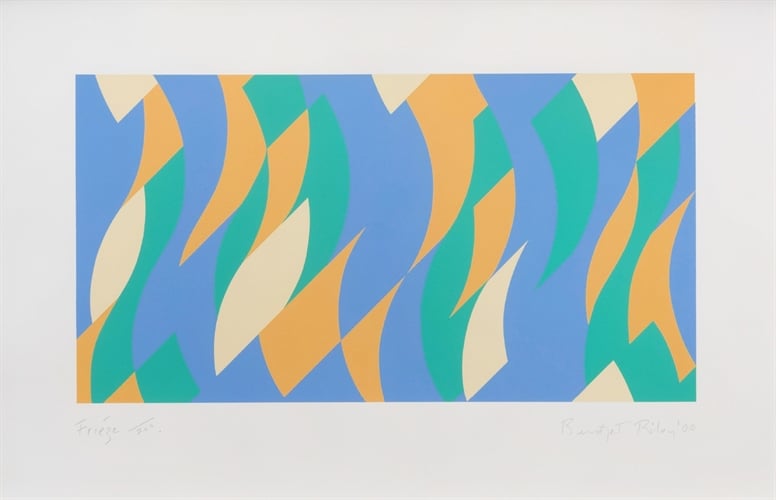
Bridget Riley, Frieze (2000). Est. $4,000–$6,000.
Renowned the world over as a leading figure of the 1960s Op Art movement—and, beyond that, as one of the most celebrated artists of our time—Bridget Riley has also continually explored the possibilities of printmaking. The elegance and visual quality of her prints are rarely found in other contemporary graphic works.
Riley’s approach to printmaking is one of particular interest. Never settling on reproducing an existing painting, she instead allows the print medium to “extend particular trains of thought” and creates prints that are independent works in their own right.
Frieze (2000) was made in collaboration with master printmaker Sally Gimson of Artizan Editions, another grande dame of British printmaking who has collaborated with Riley on many prints. Their symbiotic partnership comes to the fore in Frieze’s jubilant chromatic interaction of forms that are expertly rendered through the screen print medium that both artist and printmaker are renowned to have mastered.
Frieze is a brilliant example of Riley’s dedication to the print medium and of her continuous ability to create movement, engage the viewer with art, play with perception and, as critic Robert Melville once said, make us “more conscious of our eyes” than any other artists.
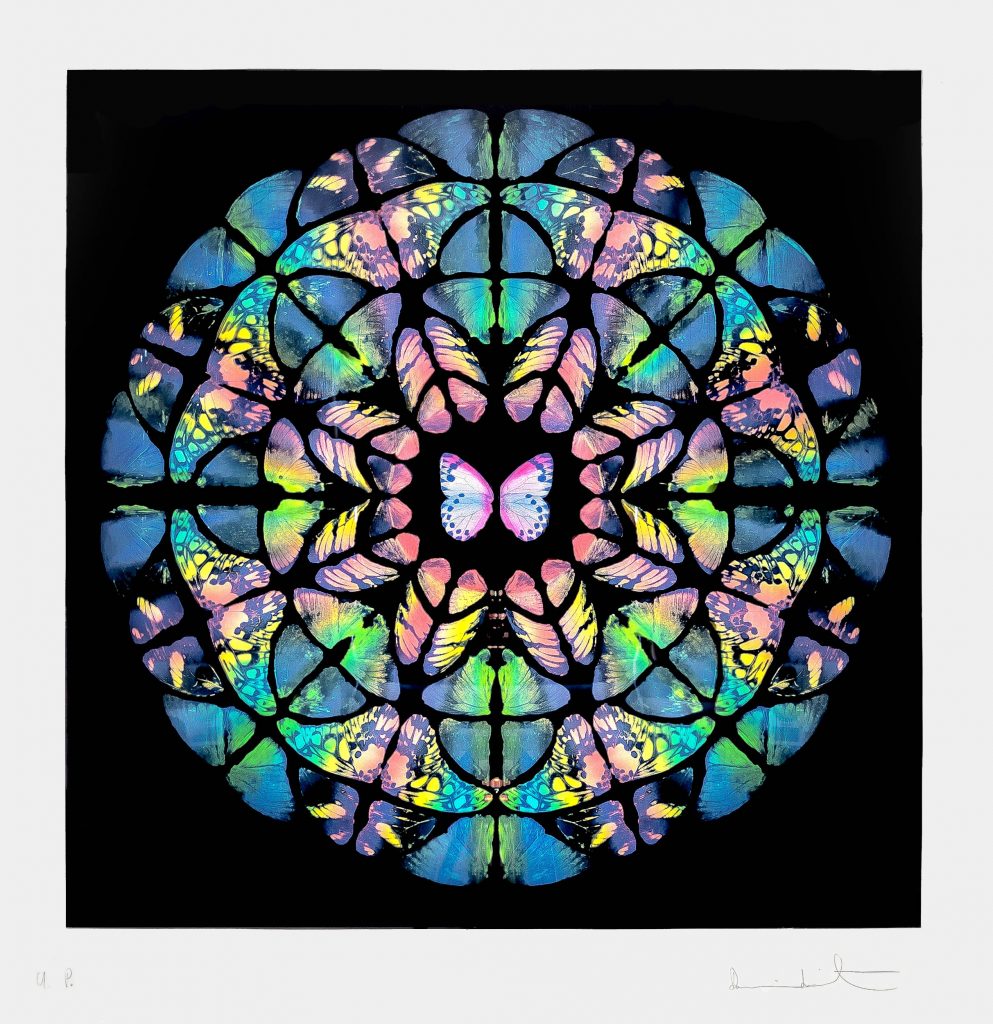
Damien Hirst, Sanctum (2010). Est. $30,000–$50,000.
In Sanctum (2010), Damien Hirst employs one of his newer, signature motifs: butterflies. The luminescent animals are arranged in a mandala-like pattern that calls to mind the stained-glass windows of European cathedrals. Butterflies have wide significance as a symbol of love, regeneration, fortune, freedom, spirituality, and death—these are themes that have informed many of Hirst’s prints as well as wider oeuvre. The present work is a unique proof with hand coloring that was created aside from the edition of 59.
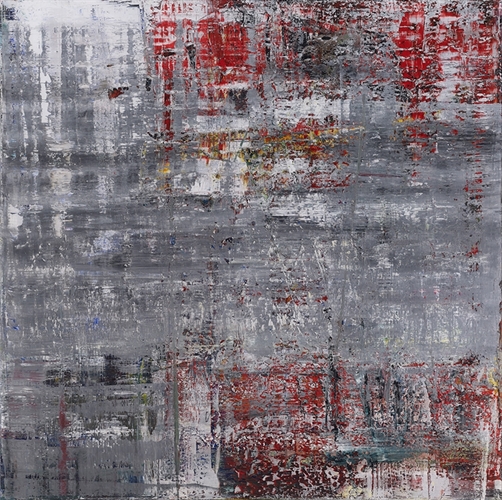
Gerhard Richter, Cage (P19-4) (2020). Est. $10,000–$15,000.
Gerhard Richter, one of the market’s leading artists, is known for his paintings that range from hyper-real to boldly abstract. Cage (P19-4) (2020) takes its composition from the artist’s 2006 “Cage” series, which Richter created by pushing and pulling layers of paint across the surface of canvases with a homemade squeegee. The result is a richly textured composition which captures the artist’s spontaneous motion through its layers of color. The title of the series is a tribute to John Cage, whose music the artist listened to while creating the paintings.
Cage (P19-4) comes from the edition of 200 diasec-mounted chromogenic prints on aluminum. Denoted by an identifying “P” number, these works are part of an ongoing series of pieces that the artist describes as “facsimile objects” that are an offshoot of his paintings.
Explore these works and more in Artnet’s Contemporary Editions auction, live for bidding through May 30, 2024.